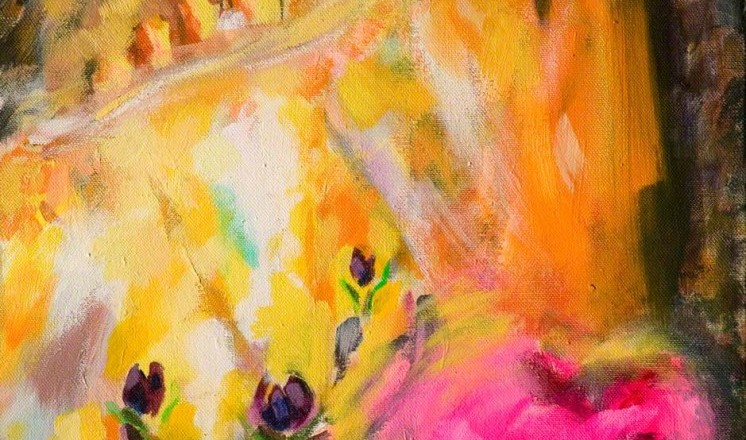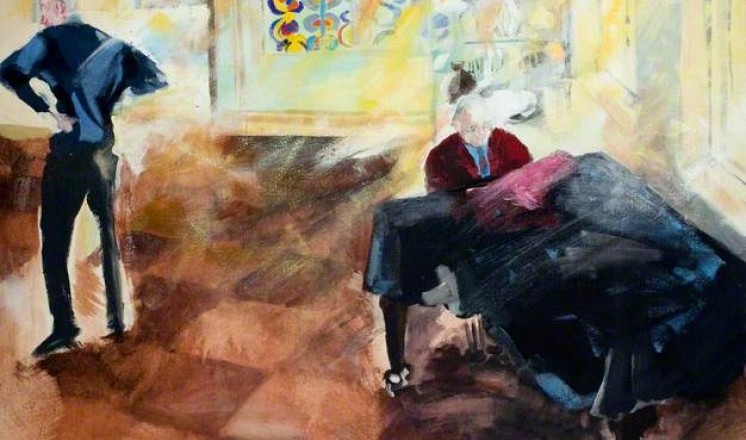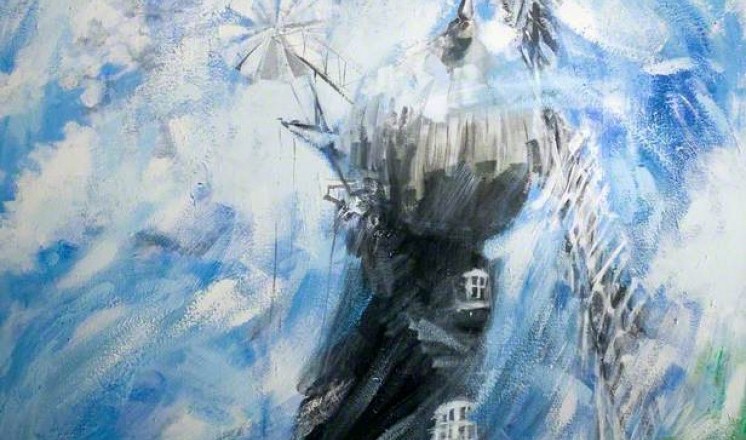‘Every Human Being is an Artist’ - inspiring you to get creative at home
RSS FeedWe want to inspire you to get creative, so here is something for those missing our weekly Wednesday Life Drawing sessions and all those who need a bit more inspiration to get creative!
To start us off our Life Drawing tutor, Medina Hammad, shares with us her lockdown thoughts for our blog:
"Every human being is an artist"
"The great German artist Joseph Beuys said “Every human being is an artist” - he went on to underline the importance of our individual responsibility for our personal development.
I've always found this outlook really inspiring.
The dictionary definitions of creativity involve "nudging something into existence and what is amazing about this is how we can all do this in completely different ways".
I paint and draw, but currently I've paused. This strange period has sent me to the internet and my bookshelves. I've found myself discovering and re-visiting many examples of creative development. From fabulous painters to equally fantastic cooks, inventors and gardeners (some famous, some not), I've been looking at the beautiful art books written by the contemplative nun Sister Wendy Beckett. She rarely left her caravan and consequently looked mainly at art on postcards and in books.
The important point is, that being creative means being resourceful and inventive. This is what human beings do.
Beuys valued our ability to realize “our capabilities”. We owe it to ourselves – so we should make in whatever way we can."
Inspired? Why not take on our Art Challenge?
So now it's time for you to embrace your inner artist and take part in our art challenge, anyone can get involved, you could either set your timer to create a 15 minute sketch or make a grand masterpiece.
Pick any of the below subject matter below, pick whatever you have around you in the home and get creative!
Some ideas of what you can respond to:
• Still life
• Self Portrait
• Interiors
• Work from a photograph
• Capture your children
• Your Pets
Quick Tips before you begin our Art Challenge from Medina Hammad
You may be a complete beginner or feel comfortable and confident with particular techniques and methods that you are familiar with. Most people want to practice and develop what they do. Artwork can involve using simple stuff you have to hand or conventional materials, you can get going with anything. There are some simple factors to bear in mind before you begin...
1) Time scale - How long do you wish to spend on your study? Is it quick timed sketch or can it be left set up if you wish to return to?
2) Physical scale and location – Are you working on a large or small scale? Are you working on your knee, at a table, on an easel or a board?
3) Surface - You can paint and draw on anything – paper, card, fabric etc. see what you can find around the house.
4) Materials - There are many possibilities all with different qualities and approaches. Be practical and safe. Drawing, painting, mixed media, collage, rubbings, digital means all offer possibilities. Try materials out first, with no pressure.
Ways of getting started....
1) Measure – Use small marks or faint outlines to plot out and pin point where things are.
2) Look at your real subject and squint. Locate the darkest and lightest areas first and then find the mid-range ones.
3) Compose – make a viewfinder by cutting a square/rectangular hole into a piece of card. Look through it at your subject to find what's there and to make a choice about your view. You may also use a camera's viewfinder as well.
4) Lighting – this could be natural or artificial. Play about and explore!
5) Sketch - try to make lots of small studies first; these are sometimes called 'thumbnail sketches'. They can be on one sheet or several. They help you see, choose and get warmed up.
Quick Tips for Portraits
You can work from a mirror, a photograph, a sitter or your imagination. Self-portraits can be a really good way to start and can be made from all sorts of reflective surfaces. When using mirrors think about scale, you might want to set up two or three and see your profile. Some make up/shaving mirrors show a conventional view of your face and a close up on the other side.
Find other reflective surfaces in your home...windows, metallic objects….some will distort your features; look at your face in a spoon!
Choose your composition: either close-up or distant. A head and torso, full length…try whatever you like.
Next step is to measure, there is no single way to measure proportionally. Choose one point of measurement and use it throughout your study to check and keep correcting as you go.
Try to initially see the head, neck, shoulders as three dimensional forms or shapes, and not flat ones. An interesting thing to do is to close your eyes and feel parts of your head. Find the shape and gradually map details out in your study.
Think about light sources. Light your head or someone else's from above, below, the side etc. Move around in a room...see what happens.
Remember a portrait doesn't have to be restricted to your head. A portrait can be of your hands or feet, or your belongings or clothes. It can be a view from a distance. It can be something entirely imaginary...shapes, colours, marks. It can be about mood, instinct and expression.
Quick Tips for Interiors
Interiors can be really inspirational. They can be your own or another space - which can be public or private. They can be imaginary like Alice in Wonderland. You could choose something you love...the way light comes through a window and falls on the floor at a particular time of day. Or there could be a room full of jumble, mess and chaos.
Why not try these following suggestions and with all of these you could use a camera and a home-made viewfinder to help.
Think about light. Is the light inside or does it venture in from outside? Do you want to interfere with the light? What is the weather doing? What impact does the time of day make? Watch how the lighting changes in your interior at sunset and sunrise or morning and twilight?
Movement may be part of your interior. Steam maybe coming from a bathroom or a kettle, there could be a flickering light off a screen or window pane, or there is a breeze coming in through a curtained window. This can make material flutter. Dust particles in light. Someone stirring whilst they doze, a pet moving – have a go at capturing this.
Quick Tips for Still Life
This could involve something you have set up or something that exists already. You can be really imaginative – organic and non-organic material – these objects can be either functional or decorative ones, both large and small forms. As mentioned light and colour and the items shapes can be chosen by you and remember to use a camera or viewfinder to help.
Why not try these following suggestions
1. An interesting challenge can involve assembling items which are all the same colour or variation of shape. For example, several bottles or a collection of only red objects.
2. You could try the above but with colours or shapes that clash or complement each other.
3. Think about the still life and its context. What happens if you take some things associated with one room or set of uses and put them somewhere different?
4. Your distance from the still life. Work from it up close and further away – see what happens. Move your arrangement around.
5. Reflections can be a useful asset. Put the still life near something reflective. This could be under, over, in front of, within....you could use a bowl of water, glass, plastic or mirrors.
See the works that people have submitted for the Art Challenge in the gallery to the side of this page!
Need even more inspiration? Why not visit our Online Learning page where the #InvestigateLearning team have uploaded loads of educational and creative resources for families, young children and grown ups alike!
Image credit:
'Father's Robe, Fountain Lamp and Satin Cushion', Medina Ann Hammad, 1991. (cropped image)
Image © the artist, courtesy of The Collection and Usher Gallery
'Fred and Trevor', Medina Ann Hammad, (cropped image)
Image © the artist, courtesy of The Collection and Usher Gallery
'From Sea to Sky', Medina Ann Hammad (cropped image)
Image © the artist, courtesy of The Collection and Usher Gallery
Comments
Great artwork, all of them. Different styles which together compliment each other so well.it gives me inspiration too; to venture outside the ordinary vary my use of space.
Elizabeth Jane Johm






